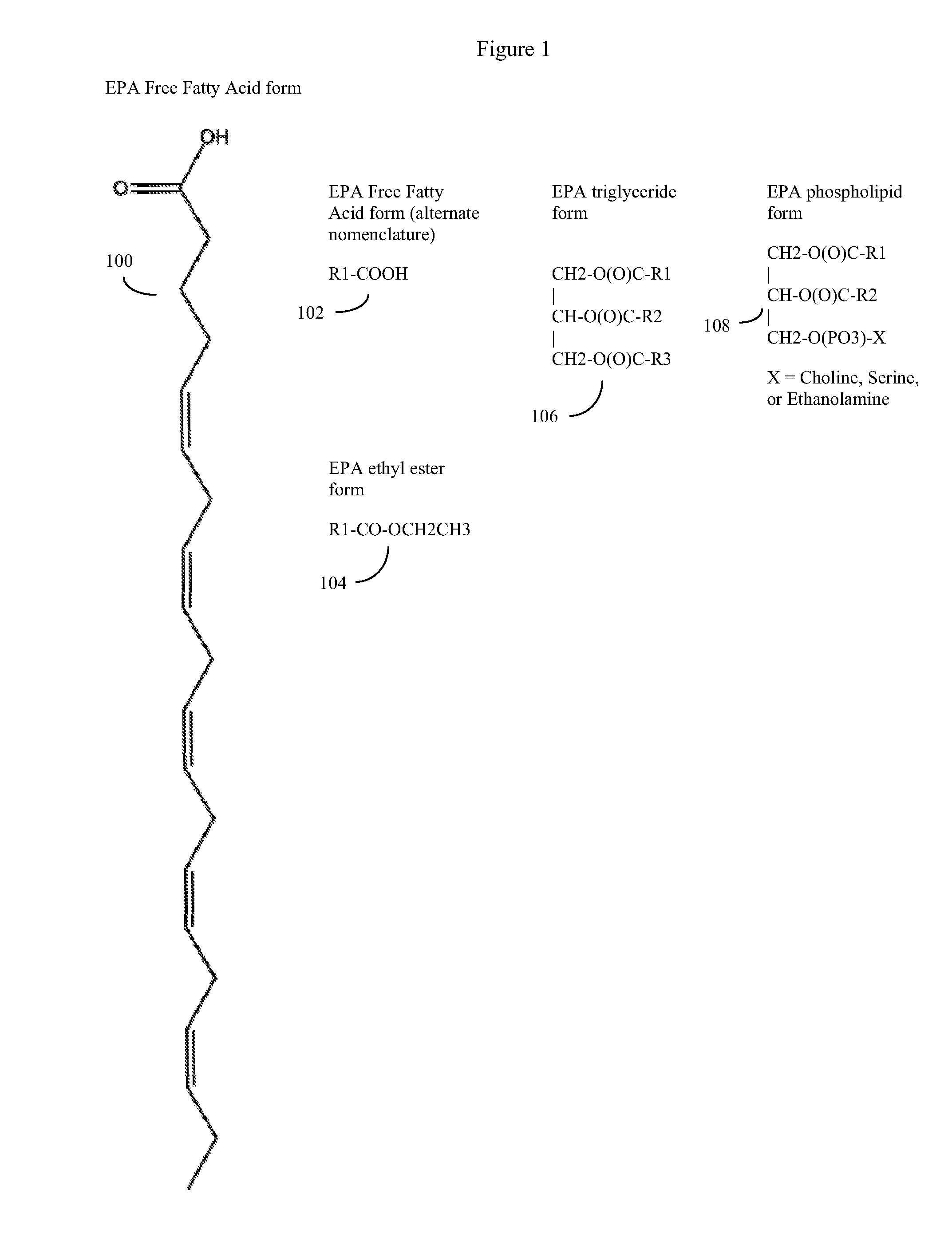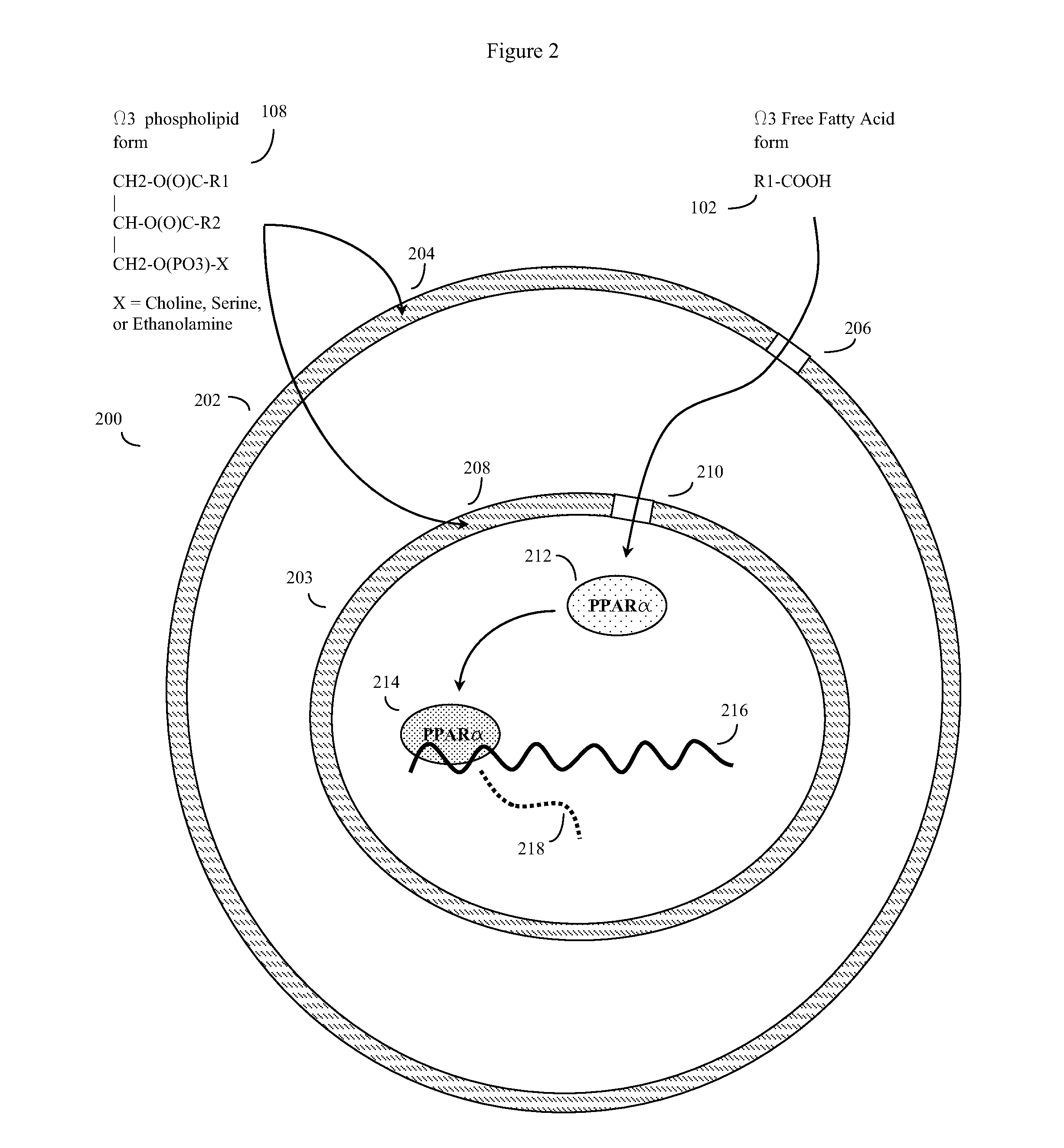Omega-3 fatty acid nutriceutical composition and optimization method
a technology of omega-3 fatty acid and composition, applied in the field of nutritional supplements, can solve the problems that no prior art formulation has been optimized for the purpose, and achieve the effect of enhancing membrane fluidity and permeability, and better stimulating biological receptors
- Summary
- Abstract
- Description
- Claims
- Application Information
AI Technical Summary
Benefits of technology
Problems solved by technology
Method used
Image
Examples
Embodiment Construction
[0049]FIG. 1 shows the difference between the free fatty acid forms, ethyl ester forms, triglyceride forms, and phospholipid forms of an omega-3 fatty acid such as EPA.
[0050]Here, the chemical structure of EPA (100) in the free fatty acid form, which is CH3CH2CH═CHCH2CH═CHCH2CH═CHCH2CH═CHCH2CH═CH(CH2)3COOH can be abbreviated as R1-COOH (102). Similarly the chemical structure of EPA in the ethyl ester form can be abbreviated as R1-CO—OCH2CH3 (104).
[0051]EPA in the 3-chain glycerol form (106), assuming that only one of the chains R1 is EPA, and the other two chains may be different fatty acids, often common C16 and C18 fatty acids (R2 and R3) is:
[0052]By contrast, EPA in the phospholipid form (108) has the chemical structure:
where X may be a side group such as choline, serine, or ethanolamine
[0053]As previously discussed, manufacturers are usually reluctant to disclose the fact that they have chosen to keep the processed omega-3 fatty acids in their unnatural ethyl ester form. Since t...
PUM
| Property | Measurement | Unit |
|---|---|---|
| fatty acid | aaaaa | aaaaa |
| relative composition | aaaaa | aaaaa |
| fluidity | aaaaa | aaaaa |
Abstract
Description
Claims
Application Information
 Login to View More
Login to View More - R&D
- Intellectual Property
- Life Sciences
- Materials
- Tech Scout
- Unparalleled Data Quality
- Higher Quality Content
- 60% Fewer Hallucinations
Browse by: Latest US Patents, China's latest patents, Technical Efficacy Thesaurus, Application Domain, Technology Topic, Popular Technical Reports.
© 2025 PatSnap. All rights reserved.Legal|Privacy policy|Modern Slavery Act Transparency Statement|Sitemap|About US| Contact US: help@patsnap.com



